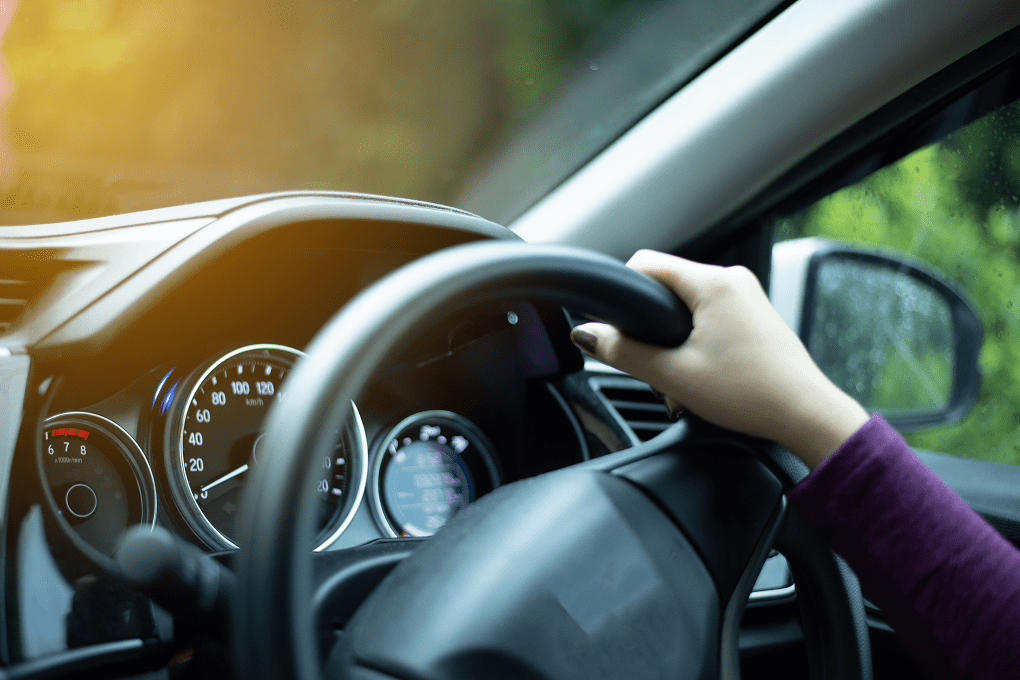California Driving test: 7 Tips to Pass the road test at your first try!
Navigating the California Department of Motor Vehicles (DMV) road test can be a pivotal moment on the journey toward obtaining a driver’s license. Aspiring drivers must not only showcase their practical skills but also demonstrate a deep understanding of California’s road rules. In this essay, we will delve into strategic insights and practical tips to guide individuals on the path to success in passing the California driving test.

1. What is the California Driving test?
The Driver’s Performance Evaluation (DPE) in California is a 20-minute practical driving test administered to individuals before the issuance of a driver’s license. Throughout the examination, participants navigate actual road conditions, showcasing various safe driving techniques for the examiner.
The primary objective of the road test is to ensure that drivers can apply safe driving practices in real-world scenarios. Moreover, if individuals have physical conditions, such as impaired vision or a missing limb, the test provides an opportunity to demonstrate that these conditions do not compromise their capacity to drive safely.
2. What are the steps to pass the California Driving test?
2.1. Step 1: Get your DMV CA Learner’s permit
If you pass the written test, you’ll receive a learner’s permit. With the California DMV permit, you can practice driving with a licensed adult over the age of 18.
2.2. Step 2: Practice driving
Gain practical driving experience with your learner’s permit. Practice various maneuvers, such as turns, stops, parking, and merging, to build confidence behind the wheel.
2.3. Step 3: Enroll in Driver’s Education
If you are under 18, you may be required to complete a driver’s education course before taking the driving test. Check the specific requirements for drivers under 18 on the DMV website.
2.4. Step 4: Schedule for the test
Schedule an appointment for the behind-the-wheel driving test at a DMV office. You’ll need to bring a registered and insured vehicle for the test.
2.5. Step 5: Prepare for the Driving test
Review the California Driver Handbook and practice safe driving behaviors. Be familiar with common driving maneuvers and procedures, including parking, lane changes, and using signals.
2.6. Take a behind-the-wheel test
On the scheduled date, take the behind-the-wheel driving test with a DMV examiner. Demonstrate your ability to drive safely, follow traffic laws, and perform required maneuvers.

2.7. Receive your CA driver’s license
If you pass the driving test, you will receive your California driver’s license. If there are specific conditions or restrictions based on your age or driving experience, they will be indicated on the license.
3. What is included in the California Driving test checklist?
Included below are some key elements of a driving test along with associated tips. To excel in the driving test, it’s beneficial to practice each maneuver multiple times under the guidance of a supervising adult:
Speed Limits: Always adhere to posted speed limits, and remember to reduce speed in response to prevailing conditions.
Crosswalks: Exercise caution to identify crosswalks, and if your visibility is hindered, proceed slowly with vigilance, checking both directions.
Parking: Practice parallel parking and 2- and 3-point turns to enhance your proficiency.
Stopping: Familiarize yourself with designated stopping points. Execute gentle and complete braking maneuvers.
Lane Changes: Signal all turns and lane changes at least 100 feet before initiating the maneuver. Deactivate your signal after completing the action.
Defensive Driving: Maintain a safe following distance and stay alert to potential mistakes made by other drivers.
Steering: Prioritize smooth and controlled steering movements.
Acceleration: Exercise control over acceleration, avoiding engine stalls or excessive racing.
Transmission: Understand your current gear, be aware of the appropriate gear for the situation, and execute gear shifts without grinding.
Repeated practice of these skills with a supervising adult will enhance your readiness for the driving test.
4. What are the automatic fails on the driving test in California?
Your examiner will note any errors made during the driving test. If you observe them marking your scoresheet, there’s no need to worry; you can accumulate up to 15 points without an automatic failure.
However, certain actions will result in an immediate failure on the driving test, particularly those with the potential for a fatal crash or necessitating examiner intervention. Avoid these six critical errors:
Unsafe Lane Changes: Failure to use mirrors or check blind spots may lead to a crash.
Failure to Yield: Inability to determine safe turns, stops, or give priority to pedestrians and emergency vehicles poses a road hazard.
Illegal Turns: Making turns at inappropriate times poses risks and will result in a fail.
Signs of Inexperience: Demonstrating unfamiliarity with traffic signs, crossing lines, and basic driving principles will prompt the instructor to recommend additional practice before obtaining your license.
Lack of Attention to Surroundings: Checking your phone, overlooking crucial safety signs, or exhibiting tunnel vision while driving requires a re-examination.
Rolling Stops: Failing to come to a complete stop at red lights, stop signs, and other road situations will result in an immediate failure.
By avoiding these hazardous actions, you increase your chances of passing the road test. Maintain composure, stay attentive, and apply the knowledge from your handbook during the examination.

5. What are some helpful tips to pass the California Driving test?
Passing the California driving test requires preparation, practice, and confidence. Here are some helpful tips to increase your chances of success:
5.1. Study the California Driver Handbook
- Thoroughly familiarize yourself with the California Driver Handbook, which serves as a comprehensive guide to the state’s traffic laws, road rules, and safe driving practices.
- Pay special attention to sections covering traffic signs, signals, and laws, as these are fundamental to the written and practical aspects of the driving test.
- Utilize online resources and California driving test practice to reinforce your knowledge and ensure a solid understanding of the material.
5.2. Regular Practice Sessions
- Consistent and regular practice behind the wheel with a licensed adult is crucial for building confidence and refining your driving skills.
- Focus on mastering various maneuvers, including turns, stops, parking, and lane changes, to ensure you are well-prepared for the diverse scenarios presented during the driving test.
- Choose a variety of driving routes that encompass different traffic conditions, intersections, and road types to expose yourself to various real-world situations.
5.3. Understand Traffic Signs and Signals
- Commit to memory the meanings of various traffic signs and signals, as a solid understanding of these is imperative for safe and lawful driving.
- Regularly review and quiz yourself on the significance of different signs, ensuring you can quickly and accurately interpret them while on the road.
- Use mnemonic devices or visualization techniques to aid in remembering the colors, shapes, and symbols associated with different signs.
5.4. Practice Defensive Driving
- Emphasize defensive driving practices during your practice sessions, consistently maintaining a safe following distance and remaining vigilant to potential hazards.
- Cultivate a proactive approach by anticipating the actions of other drivers, pedestrians, and potential road obstacles.
- Regularly check your mirrors to stay aware of your surroundings and promptly react to changing traffic conditions.
5.5. Use Mirrors and Signals Effectively
- Master the art of using mirrors to monitor your surroundings, check blind spots, and stay informed about the positions of nearby vehicles.
- Practice timely and clear signaling for turns and lane changes, ensuring that your intentions are communicated to other road users well in advance.
- Develop a habit of checking mirrors and signaling at least 100 feet before initiating a turn or lane change to align with driving test expectations.
5.6. Stay Calm and Confident
- Acknowledge and accept that nervousness is a common aspect of taking a driving test, but actively work on maintaining a calm and composed demeanor.
- Practice deep-breathing exercises or mindfulness techniques in the lead-up to the test to manage anxiety and promote a focused mindset.
- Remind yourself of your thorough preparation and the hours spent practicing both the written and practical components of the test.
5.7. Ask Questions and Seek Clarification
- During the driving test, if you encounter any uncertainty or require clarification on instructions, do not hesitate to ask the examiner.
- Seeking clarification demonstrates your commitment to understanding and following instructions accurately, contributing to a positive impression.
- Prioritize clear communication with the examiner, ensuring you comprehend each directive before proceeding with any driving maneuvers.
In conclusion, the California driving test represents a critical milestone in the process of obtaining a driver’s license. As we have explored in this essay, success in this endeavor is not merely about steering a vehicle but encompasses a comprehensive understanding of traffic rules, a commitment to defensive driving, and the ability to remain calm under pressure. Remember, passing the DMV road test is not just about gaining a license; it is a testament to one’s preparedness and responsibility as a driver on California’s diverse and dynamic roadways.

